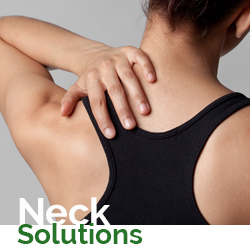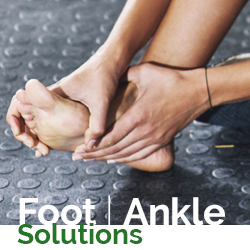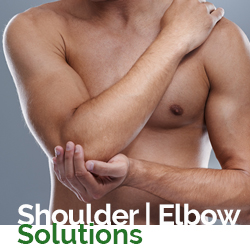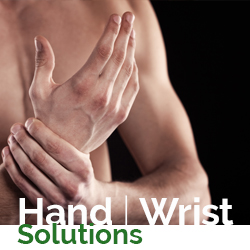DME (Durable Medical Equipment) Glossary
Achilles tendonitis – Inflammation of the heel cord that is the extension from the triceps surae group of muscles.
ACL – Anterior cruciate ligament.
ALPSA lesion – Anterior labrum periosteal sleeve avulsion.
Arthritis – inflammation of a joint, usually accompanied by pain, swelling, and sometimes change in structure.
Arthroscopy – a surgical procedure used to visualize, diagnose, and treat problems inside a joint.
Ankylosing Spondylitis – A rheumatoid arthritis-type disease causing spontaneous fusion of the spine.
Arthritis – Inflammation of a joint.
Arthroplasty – Reconstructive surgery of a joint or joints to restore motion because of ankylosis or trauma or to prevent excessive motion.
Asteonecrosis – Death of bone tissue.
Atrophy – Reduction in size of an anatomic structure, frequently related to disuse or decreased blood supply.
Bankart lesion – Avulsion of the anterior glenoid labrum which is usually associated with anterior shoulder dislocations.
Bennet lesion – Posterior glenoid defect associated with overhead throwing injuries.
Biomechanics – The application of mechanical laws to living structures, specifically to the locomotor system of the human body.
Bisphosphonate medication trials – This family of medications is used widely in orthopaedics for treatment and prevention of complications involving metastatic breast cancer, multiple myeloma, Paget’s Disease, osteoporosis, fibrous dysplasia, Gaucher’s disease, and other conditions.
Bone cysts – A sac containing liquid or semisolid material on a bone.
Bone metastases – The spread of malignant cancer cells to bone.
Brachial plexus palsy – Excessive lateral flexion of the head on the trunk during delivery of the shoulders or delivery of the head in a traction injury to one or more components of the brachial plexus.
Brachytherapy – Radiotherapy treatment with ionizing radiation whose source is applied to the surface of the skin.
Bunion – an inflammation and thickening of the bursa in the joint of the big toe.
Bursa – a sac filled with fluid located between a bone and a tendon or muscle.
Bursitis – repeated small stresses and overuse that cause the bursa to swell and become irritated.
CT (computed tomography) scan – a specialized X-ray study that allows careful evaluation of the bone and spinal canal.
Carpal tunnel syndrome – Loss of sensation and sometimes motor control if median nerve is cut off at the wrist because of compression of the nerve at the carpal ligament.
Cartilage – a smooth material that covers bone ends of a joint to cushion the bone and allow the joint to move easily without pain.
Carticel TM – Autologous Chondrocyte Implantation is the culturing and growing of chondrocytes (cells responsible for generating and maintaining healthy hyaline cartilage) from the patients own body and implanting those cultured cells into the lesion.
Cerebal palsy – A general term applied to central nervous system disorders found at birth or infancy and affecting muscle control.
Cervical Spine Degeneration – The deterioration of quality of the seven segments of spinal tissue between the base of the skull and the thoracic spine.
Chondrosarcoma – Sarcoma in which cancer cells are making cartilage.
Club feet – Turning of the heel inward with increased plantar fexion (the toe-down motion of the foot at the ankle).
Compliant fixation system – A novel mean for securing massive prostheses to bone that uses a spring-type mechanism to avoid long stems, bone cement, and problems of stress shielding and osteolysis.
Contusion – bruise.
Coralline hydroxyapatite – An effective bone graft substitute FDA-approved for treatment of benign cystic bone defects, this material is converted by the manufacturer from actual deep sea calcium carbonate coral into a material that mimics bone in chemical composition.
Custom splint fabrication – Custom or prefabricated orthotic devices designed to support, protect or immobilize or to correct deformities of the hand/upper extremity.
Decompressions – In relation to the spine this procedure is carried out to relieve the pressure on the spinal cord or nerve roots. The pressure may result from fracture fragments, disk fragments, tumors or infections.
Degenerative Disc Disease – Gradual or rapid deterioration of the chemical composition and physical properties of the disk space.
Desensitization – Treatment of hypersensitivitiy and pain secondary to nerve injury, partial nerve injury, nerve compression, and soft-tissue injuries.
Diskectomy – The excision of intervertebral disk material that may be described as herniated, implying “bulging” or “ruptured” through the ligaments.
Dupuytren’s Contracture – A hereditary thickening of the tough tissue, called fascia, that lies just below the skin of the palm resulting in flexion deformities of the finger.
Edema Control – Methods and devices used to minimize persistent swelling in the hand or upper extremity.
EMG (electromyogram) – a test to evaluate nerve and muscle function.
Ewing’s sarcoma – Malignant tumor of bone seen in children, composed of small round cells.
Femur – thighbone.
Fibromyalgia – A painful condition of the muscles which can occur as a result of stress, muscle injury, or muscle overuse. Tender areas in the muscles commonly called “knots” but in medical terminology called “trigger points” create musle spasm and tightness.
Fibrous dysplasia – A progressive and usually lethal process in which multiple muscles form bone.
Flatfoot – Condition in which one or both arches have flattened out.
Inflammation – a normal reaction to injury or disease, which results in swelling, pain, and stiffness.
Ganglion cysts – non-cancerous, fluid-filled cysts are common masses or lumps in the hand and usually found on the back of the wrist.
Guillain barre syndrome – Viral disorder involving spinal cord, peripheral nerves and nerve roots.
HAGL lesion – Humeral avulsion of glenohumeral ligament.
Hammertoe – a permanent sideways bend in the middle toe joint
Herniated Disc – Fibrous extrusion of semifluid nucleus puposus through a ruptured intervertebral disk; damage results from pressure on the spinal cord or nerve roots.
Hill-Sachs lesion – Bony defect in the humeral head caused by a shoulder dislocation.
Hip Dysplasia – Failure of normal bony modeling of the hip socket.
Inotophoresis – Process whereby ions in solution are transferred through the intact skin via electrical potential using bipolar electrodes.
Internal Glenoid Impingement – Pain syndrome caused by abrasion of the posterior labrum and rotator cuff (usually in baseball pitchers).
Intradiscal therapy – Introduction of either steroid or other medication into the disc space to relieve pain caused by a degenerated disc, or introduction of a catheter that allows heating of the disc and the annulus to ablate nerves that may be responsible for pain.
Joint – where the ends of two or more bones meet.
Joint mobilization – Use of specific passive procedures to restore accessory movements, stretch joint capsules and ligaments and to reduce pain and muscle guarding of stiff joints.
Kinematics – That phase of mechanics which deals with the possible motions of a material body.
Kyphosis – Any forward-bending area or deformity in the spine.
Labral Lesions – A fibrocartilaginous supporting structure which surrounds the glenoid bone in the shoulder.
Leg length inequity – One leg is shorter than the other. This is a common sequel of many congenital and acquired musculoskeletal diseases.
Liquid nitrogen cryospray therapy – Aerosolized liquid nitrogen from a cannister system can be administered directly to the edges of a benign tumor cavity to provide additional or ‘adjuvant’ treatment that helps to reduce the chances of tumor recurrence.
Ligaments – connect the bones and keep joints stable.
Little leaguer’s Elbow – Overuse injury to the lateral aspect of the elbow (capitellum).
Little leager’s shoulder – Separation of the proximal humeral growth plate.
Locomotor system – The musculoskeletal system movement or the ability to move from one place to another.
Malunion – State of healing of the bone in which bone unites but in abnormal position and/or alignment.
Morton’s Neuroma – A pinched nerve usually causing pain between the third and fourth toes.
MRI (magnetic resonance imaging) – a non X-ray study to allow an evaluation of the spinal cord and nerve roots.
Multidirectional instability – Shoulder laxity in multiple directions which causes pain or dysfunction.
Multiple Sclerosis – Slowly progressive disease of nervous system in which scattered areas of degeneration of the myelin (lipid substance forming a sheath around certain nerve fibers) occur.
Muscular Dystrophy – A group of degenerative disorders of muscle resulting in atrophy and weakness.
Musculoskeletal system – the complex system that includes: bones, joints, ligaments, tendons, muscles, and nerves.
Myelogram – a specific X-ray study that uses an injection of a dye or contrast material into the spinal canal to allow careful evaluation of the spinal canal and nerve roots.
Myofascial treatment – Treatment of a hyperirritable spot, usually within a taut band of skeletal muscle or fascia.
Nerve block – Injection of lidocaine or other medication around a nerve to determine if a particular nerve is responsible for causing pain, and to relieve pain.
Neuromuscular Re-education – Used in cases of post operative care of surgical repair of nerve injuries. Involves the retraining of reinnervated muscles.
Nonunion – State of healing of the bone in which there is no healing.
Orthopaedic surgeon (or orthopaedist) – the physician who diagnoses, treats, manages the rehabilitation process, and provides prevention protocols for patients who suffer from injury or disease in any of the components of the musculoskeletal system.
Orthopaedic surgery (or orthopaedics) – the medical specialty devoted to the diagnosis, treatment, rehabilitation, and prevention of injuries and diseases of the body’s musculoskeletal system.
Orthotics – The science that deals with orthoses designed to provide external control, correction, and support. (orthoses = braces)
Osteoarthritis – generally, a condition caused by wear and tear that causes inflammation of the joint, causing swelling, pain, and stiffness.
Osteomyelitis – Inflammation of bone marrow, cortex, tissue and periosteum; can be caused by any organism, but usually bacteria.
Osteoporosis – (porous bone) – a condition that develops when bone is no longer replaced as quickly as it is removed.
Osteosarcoma – Sarcoma in which cancer cells are making bone.
Osteotomy – Surgical procedure that changes the alignment of bone with or without removal of a portion of that bone.
Paget’s Disease – Disease of excess bone removal and replacement with deformity.
PCL – Posterior cruciate ligament.
Peripheral nerve disorders – Problems involving numbness, tingling and weakness in the upper extremity.
Phonophoresis – Therapeutic application of ultrasound with a topical drug, most commonly corticosteroid.
Plantar Warts – warts that occur on the sole of the foot and look like calluses as a result of an infection or a specific virus.
Post Polio Syndrome – A syndrome of increasing weakness, fatigue and pain appearing decades after an acute infection of poliomyelitis.
Posterior/anterior Spinal Fusions – A procedure for fusing two or more spinal segments with or without removal of an intervertebral disk.
Prosthetics – The science that deals with functional and/or cosmetic restoration for all or part of a missing limb. (prostheses = artificial limb)
Radiation Catheters – Brachytherapy refers to radiation treatments administered through plastic tubes or catheters that are placed directly into the wound bed at the time of surgery; the radiation is given precisely where it is needed, soon after surgery, with an attempt to minimize complications.
Reflexive Sympathetic Dystrophy – A diseased state of an extremity that is characterized by very severe pain, swelling, stiffness, and discoloration. It usually occurs after a trauma or disease of an extremity is generated by an abnormal sympathetic reflex, and is characteristically treated by the abolition of this increased sympathetic nerve stimulation. RSD is generally considered to be synonymous with vasomotor and trophic disorders.
RICE treatment – rest, ice, compression, and elevation.
Rotator Cuff Disease – Inflammation or rupture of one or more of the tendons that lie deep in the shoulder and bridge the glenohumeral joint.
Rotator Cuff Impingement Syndrome – Painful RTC abrasion by an overhanging acromion, AC joint, or coraco-acromial ligament.
Rotator Cuff Tear – Tear of the rotator cuff tendons. (Supraspinatus, Infraspinatus, Teres Minor, or Subscapularis)
Rotator Cuff Tendinosis – Degenerative changes in rotator cuff tendon that occur with age and with overuse.
Rotator Cuff Tendonitis – Inflammation of the rotator cuff and associated bursal sac.
Scar remodeling – Includes various methods and devices such as scar massage, pressure garments, serial casting, motion, stress and elastomeres or topical silicone gel pads.
Scoliosis – Side-to-side curve in the back, a lateral and rotational deviation of the spine from the normally straight vertical line of the spine. Such a curve may be termed fixed, which means that any attempt to eliminate the curve by body motion is not sucessful.
SLAP Lesion – Superior labral lesion in the shoulder.
Soft-tissue – generally, the ligaments, tendons, and muscles in the musculoskeletal system.
Spina bifida – Congenital absence of a large portion of the posterior spine, usually in the lumbosacral region.
Spondylolisthesis – Displacement of a vertebral body on the one below.
Sprain – a partial or complete tear of a ligament.
Strain – a partial or complete tear of a muscle or tendon.
Stress Fractures – a bone injury caused by overuse.
Synovium – a fibrous envelope that produces a fluid to help to reduce friction and wear in a joint.
Temporal Mandibular Joint Syndrome – Complex of symptoms often seen in cervical sprain conditions. Symptoms include clicking in the jaw on opening and closing the mouth, soreness in the jaw, headaches, buzzing sounds, changes in hearing, stiffness in neck & shoulders and swallowing disorder.
Tendon – The extension of muscle into a firm, fibrous cord that attaches into a bone or other firm structure.
Tendonitis – Inflammation of a tendon.
Tennis elbow -Stress tendinitis on the lateral epicondyle.
Torn Anterior Cruciate Ligament – Tear in one or both of the two deep ligaments within the knee that are crossed.
Torn Medial Collateral Ligament – A tear in the strong fibrous ligament on the medial side of the knee connecting the femur with the tibia.
Torn Meniscus – A tear in the crescent-shaped fibrocartilaginous disk between the two joint surfaces.
Torn Rotator Cuff – Tear in one or more of the tendons that lie deep in the shoulder and bridge the glenohumeral joint.
Torosion – A type of load that is applied by a couple of forces that are parallel and directed opposite to each other about the long axis of a structure.
Total Joint Replacement – A joint replacement involving an internal prosthesis by removing the diseased joint and replacing the acetabluar components with either metal or plastic materials and a metal prosthesis of the femoral segment.
Trigger Finger – Catching or locking of a finger.
Viscosupplementaiton Injections – Injection of viscous fluid onto a synovial joint in order to treat a painful, arthritic joint.






